Choosing the Best Indoor Doormats for Wood Floors
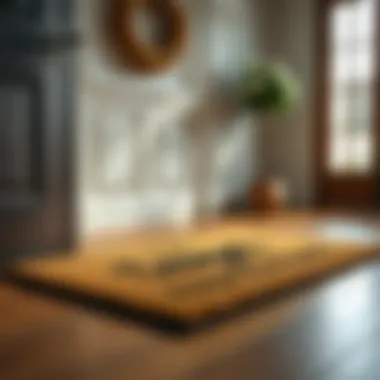
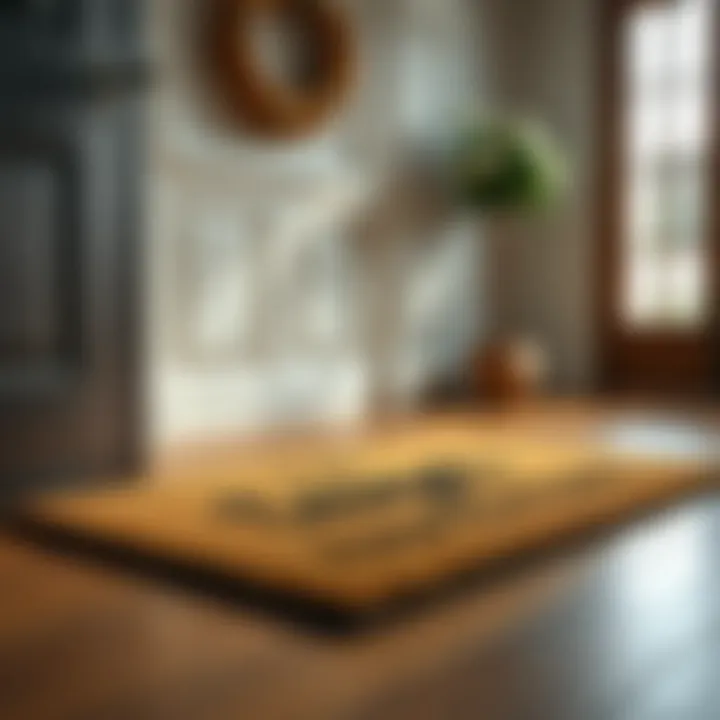
Intro
Choosing the right doormat for wood floors is no small feat. Often overlooked, the doormat serves as the first line of defense against dirt and moisture, safeguarding your elegant wooden surfaces. While it may seem trivial, the functionality, appearance, and care of doormats impact the upkeep of your home. Not only do they enhance the aesthetics of your entryway, but they also play a crucial role in maintaining the integrity and longevity of your wood flooring.
When considering the ideal doormat, a myriad of factors come into play. It’s not merely about finding something that fits your decor; it’s about ensuring that the mat selected effectively traps debris while being gentle enough not to scratch or scuff your luxurious wood floors. For the homeowners keen on blending functionality with style, this discussion aims to illuminate the essential criteria that can help you make an informed decision regarding your indoor doormat.
Furniture Design Trends
As we traverse through this topic, it becomes apparent that indoor doormats don’t exist in a vacuum—rather, they reflect and contribute to broader furniture design trends. What then are the current styles and aesthetics?
Current Styles and Aesthetics
In recent years, minimalism and natural aesthetics have carved their niche in interior design. Earthy tones are gaining traction while complex patterns seem to take a back seat. Many homeowners gravitate towards mats that echo the simplicity of Scandinavian design—a neutral approach that complements natural wood grains.
Moreover, vintage-inspired doormats that hint at rustic charm also popular—think worn-out patterns and textures that evoke warmth and history. Here, the fusion of old-world charm paired with modern functionality presents an interesting design dilemma. It’s vital you choose a style that resonates with your home’s overall theme.
Color Palettes and Materials
When it comes to color, muted shades like beige, grey, and subdued greens are becoming increasingly popular. These tones are versatile, ensuring that they blend seamlessly into various decors.
Materials also play an essential role in matching doormats to wood floors. Choose natural fibers like jute or coir, which lend a raw, organic feel. Such materials not only complement wood beautifully but also offer durability—perfect for withstanding the wear and tear of daily foot traffic.
Tip: Prefer dark-colored mats for high traffic areas to better hide stains, making maintenance less of a chore.
Buying Guides
As we delve into buying doormats, there are essential considerations to ponder before purchasing one.
Essential Considerations When Purchasing
- Material Durability: Look for mats that won’t fray or discolor easily. Natural fibers often stand the test of time but require some care.
- Design and Texture: Consider textures that effectively scrape off dirt but won’t harm your wooden floors.
- Size and Placement: Ensure your doormat fits well in your entryway—ideally, it should be large enough to accommodate multiple foot placements with room for a clean sweep.
Top Recommendations for Different Budgets
For those seeking affordable options, consider the following choices:
- Basic Cotton Mats: Ideal for dry weather.
- Recycled Rubber Mats: Great for those on a tighter budget but still need something sturdy.
For a mid-range selection, look into:
- Coir Mats: Excellent for their ability to trap dirt and adds a classic touch.
- Synthetic Options: Easy to clean and various styles available.
If you're willing to invest in premium options, consider:
- Designer Mats: Unique patterns and high durability typically make these a worthwhile purchase.
- Natural Fiber Mats: Not only look great but also offer eco-friendly benefits.
In summation, selecting the right doormat for wood floors is a task that deserves attention—underscoring a balance between aesthetics, functionality, and environmental consideration. For further information on floor care and design, visit Wikipedia or check community discussions on Reddit. From understanding design trends to making an informed purchase, your choice can leave an indelible impact on your home’s interior.
Preface to Indoor Doormats
Indoor doormats often find themselves underestimated despite their importance. These seemingly simple mats are the first line of defense against the dirt and moisture that can wreak havoc on beautiful wood floors. Understanding their role goes beyond mere practicality; it taps into the aesthetic and functional harmony within a space.
Noteworthy is the fact that a doormat can either make or break the entryway experience. When guests step inside, their first impression is influenced by the flooring, ambiance, and yes, the doormat. It can echo elegance or emphasize chaos depending on the choices made.
The value of a doormat extends further, acting as a barrier that traps grime and moisture, preventing unwelcome particles from being tracked into the home. This protective aspect holds significant significance for homeowners, particularly those with wood floors, which are not only expensive but also difficult to maintain. Keeping them in good condition can save money in the long run and maintain the home’s aesthetic appeal.
Homeowners need to consider indicators like durability, absorbency, and even their environmental impact when selecting a doormat. With so many styles and materials available, making an informed choice can feel overwhelming. However, understanding the fundamental aspects of indoor doormats and their function enables homeowners, designers, and DIY enthusiasts to select options that align with their needs and personal tastes.
The Importance of Doormats
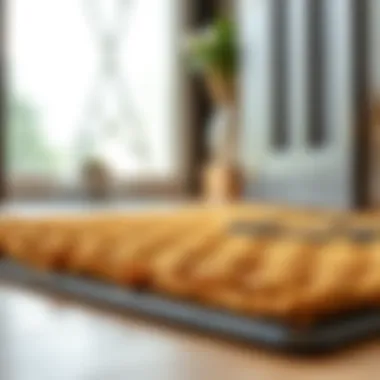
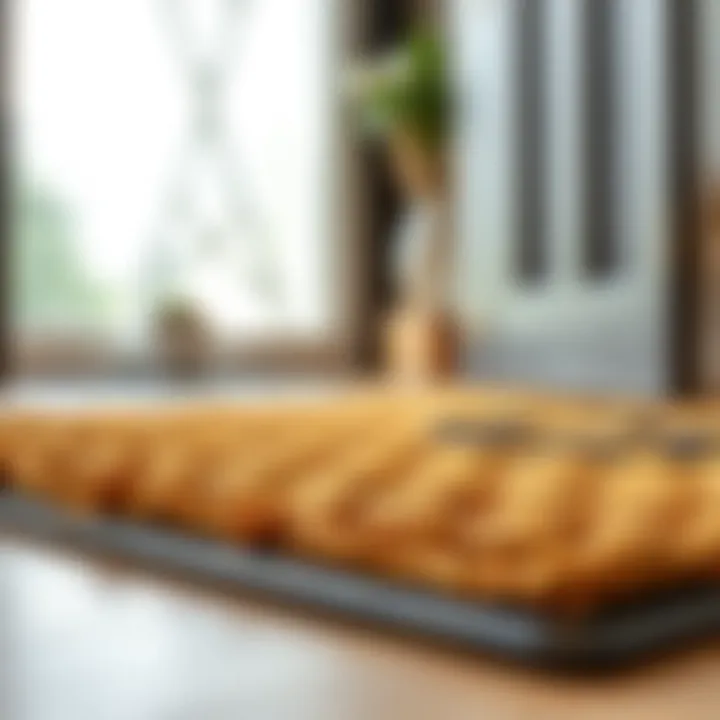
Doormats serve both practical and aesthetic roles. They minimize the amount of dirt and moisture that enters, helping to keep your floors pristine. Moreover, they add an element of style to the home. Selecting the right doormat can set a welcoming tone, making it inviting not just for guests but for the homeowner as well.
A solid doormat absorbs water from wet shoes, preventing slip hazards. When a mat fails to do its job effectively, that beautiful hardwood floor is at risk of damage from scratches and stains. Additionally, dirt accumulation can result in a loss of luster over time. Therefore, investing in a quality doormat is not merely an aesthetic decision but a functional necessity, and contemplating this can avoid bigger headaches down the line.
Why Wood Floors Require Special Consideration
Wood floors, while luxurious and visually stunning, necessitate heightened care and consideration. Wood is susceptible to moisture and scratches, which can lead to costly repairs. The type of doormat placed at the entrance plays a crucial role in protecting this investment.
Key considerations include:
- Moisture Resistance: Mats need to have excellent water absorption properties to prevent any water residue from reaching the wood surface.
- Material Choice: Natural fibers like coir or jute may be appealing, but if not treated properly, can hold onto moisture, causing mold or rot.
- Durability: A doormat must withstand the wear and tear of daily use without deteriorating quickly.
Homeowners should also consider the cleaning practices for both the mat and the floors. Easy-to-clean doormats contribute to a healthier indoor atmosphere while safeguarding wooden floors.
To summarize, understanding the critical role that doormats play ensures that homeowners can effectively maintain the beauty of their wood floors while also enhancing the visual appeal of their entryways. By selecting the optimal doormat tailored for wood flooring, one can strike a perfect balance between style, functionality, and maintenance.
Key Factors in Selecting Indoor Doormats
When it comes to selecting indoor doormats, particularly for homes with wood floors, several key factors come into play. It's not just about aesthetics; the choice of doormat can significantly impact the upkeep and longevity of your flooring. Understanding these factors helps in making the right decisions, ultimately ensuring both style and function harmoniously blend together.
Material Types and Their Benefits
Natural Fibers
Natural fiber doormats, like those made from coir or jute, bring a rustic charm that fits well with many interior styles. One of their primary characteristics is their biodegradability, which appeals to environmentally-conscious folks. These materials are great at scraping and trapping dirt, which means they keep your floors cleaner. However, they do have a downside; they're often not as durable as synthetic options, especially when exposed to moisture over time. But their unique texture adds a touch of warmth that synthetic materials sometimes lack.
Synthetic Materials
On the flip side, synthetic materials like nylon and polypropylene are known for their sturdiness. These doormats are often designed to withstand heavy foot traffic and resist fading due to sunlight. Their durability extends beyond just wear; many are also resistant to water, making them a practical choice for areas prone to spills or wet shoes. A draw back, however, is that they may not offer the same level of moisture absorption as natural fibers, which can sometimes lead to water pooling if not maintained properly.
Eco-friendly Options
For those looking to tread lightly on the planet, eco-friendly doormats crafted from recycled materials or biodegradable substances stand out. Their distinctive selling point is the commitment to sustainability; opting for these doormats means choosing products that won't linger in landfills for decades. Plus, with many companies emphasizing green practices in their production, you're also supporting responsible businesses. The only caveat is that not all eco-friendly options may provide the same durability or performance as their synthetic counterparts.
Design and Aesthetics
Colors and Patterns
Selecting the right doormat isn’t just about practicality; it’s also a chance to express your home's personality. The color and pattern of your doormat can set the tone for your entryway. Bright colors can energize a space, while neutral tones might appeal to those preferring subtlety. These visual aspects can also help mask dirt between cleanings. However, striking a balance between a vibrant look and a mat's maintenance is key, for lighter colors may show stains more readily.
Size and Shape Considerations
Size and shape are not as trivial as they may seem when selecting a doormat. A too-small mat can look out of place and fail to serve its purpose properly. Selecting a size that fits your entry can enhance not only functionality but also the visual appeal of your space. Additionally, shaped mats, whether rectangular, circular, or custom designs, can complement the entryway's architecture. Just be cautious; odd shapes might make cleaning tricky.
Functionality: Absorbency and Durability
Water Absorption Levels
One of the most critical functional aspects of a doormat is its ability to absorb water. High absorbency levels prevent water from tracking onto wood floors, keeping them safe from moisture damage. Certain materials, such as cotton, excel in this area, providing a reliable solution for rainy days. However, it's important to remember that what works great in one climate may not in another; areas with lower humidity might prefer mats made from less absorbent materials.
Resistance to Wear and Tear
Lastly, durability rears its head again when considering resistance to wear and tear. A doormat that can withstand heavy use without fraying or fading is desirable for busy households. Look for mats with reinforced edges or those designed specifically to handle foot traffic. Additionally, pay attention to the warranty offered by the manufacturer, as a good warranty can often indicate a product's lifespan and durability. However, trading off aesthetics for longevity is a common dilemma for many homeowners.
In summary, consider materials, design, and functionality carefully when choosing an indoor doormat for wood floors. Each aspect plays a role in maintaining the flooring while enhancing your home's entrance.
Top Doormat Options for Wood Floors
Choosing the right doormat is not just about keeping dirt at bay. For wood floors, the top options must balance aesthetic appeal and functionality while protecting the delicate surface beneath. A doormat can be the first line of defense against moisture, grit, and damage, making its selection crucial. In fact, the right doormat can extend the life of your wood floors, saving you from costly repairs or refinishing down the line. Let's dive into the various types available, keeping our wood floors in mind as we explore these top choices.
Natural Fiber Doormats
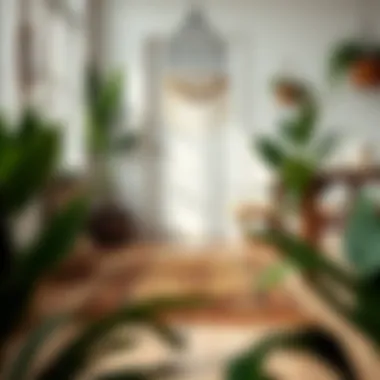

Natural fibers have a classic charm and offer a variety of benefits that make them a solid choice for indoor use. They're biodegradable, can withstand wear and tear, and often have a unique beauty that synthetic options can't quite match. However, as much as these mats bring to the table, knowing their ins and outs will help you make a more informed choice.
Coir Mats
Coir mats are made from the husk of coconuts, and they stand out for their durability and natural look. One of the primary reasons they are favored is their excellent scrub properties—ideal for removing dirt and mud before they have the chance to get tracked onto your wood floor. A notable characteristic of coir mats is their ability to handle moisture without deteriorating quickly, making them particularly beneficial in areas prone to spills. However, keep in mind they can fade in direct sunlight, so placement is key.
"Coir mats not only greet visitors but guard your floors like seasoned sentinels."
Their rough texture can be a double-edged sword, though; while it works to scrape shoes clean, it may also be somewhat abrasive against certain wood finishes if cleaned improperly. Therefore, while coir mats are effective, they do require the homeowner to stay vigilant about upkeep.
Jute Mats
Jute mats flaunt a softer texture than coir and provide a more laid-back, organic feel. Made from natural jute fibers, they are also eco-friendly and biodegradable. One of their key characteristics is their versatility in design, offering various colors and weaves that can add a stylish touch to any entryway. Many homeowners find jute mats appealing because of their stylish and modern aesthetic—perfect for contemporary interiors.
The softness of a jute mat is its selling point, but that same softness can be a disadvantage depending on your household. They absorb moisture but do require regular maintenance, as dampness can lead to mold or mildew if not dried out properly. Plus, in high-traffic areas, they may not hold up as well as coir mats, so consider usage before making a decision.
Synthetic Fiber Doormats
Synthetic materials might not have the same earthy appeal as natural fibers, but they undeniably bring robust utility to the table. These rugs are often more resistant to certain types of staining, easier to clean, and can be designed to fit a wider variety of tastes and styles. Their tough nature suits practical-minded homeowners and designers alike.
Nylon Mats
Nylon mats are perhaps the workhorses of the doormat world. They are robust, hardy, and resilient, easily capable of enduring the daily foot traffic of an active household. One of their standout features is their stain resistance and ability to bounce back from crushing, making them an excellent choice all around. Many homeowners appreciate nylon mats for their ease of maintenance and long lifespan, attributes that contribute to their growing popularity.
However, it’s crucial to think about their feel—some might find them a tad rough underfoot compared to softer options like jute or coir. When selecting nylon mats, consider the entryway's indoor climate; while they're moisture resistant, prolonged dampness can still affect their longevity over time.
Polypropylene Mats
Polypropylene mats bring a high level of durability and come with a slew of design options, often mimicking natural fiber looks without their vulnerabilities. A significant benefit of polypropylene is its resistance to stains and moisture, making it suitable for any type of weather. If you’re in a high-traffic area that sees frequent spills, these mats can be a saving grace. Cleaning is often as simple as shaking them out or hosing them down.
However, they aren’t biodegradable, which may concern environmentally conscious homeowners. Furthermore, while their appearance can range widely, some may find that they lack the warmth of natural materials. Balancing this aspect is vital when choosing your doormat.
Eco-friendly Options
As more people become aware of their environmental footprint, eco-friendly doormats have gained traction. Options made from recycled materials or designed to naturally biodegrade are not just better for our planet, they're also increasingly stylish. Opting for sustainable doormats can reflect a homeowner's values and commitment to a greener lifestyle.
Recycled Materials
Doormats made from recycled materials often manage to combine versatility and environmental responsibility. These materials can come from used plastics or other repurposed items, thus contributing to waste reduction. One of the key benefits of these mats is that they often replicate the aesthetic qualities of traditional fibers without the environmental toll.
They also are often designed to be highly durable and can withstand various weather conditions without fading easily. Some kinds even have excellent moisture management properties, making them suitable for both indoor and outdoor applications. But on the downside, the initial purchase price can sometimes be higher than that of traditional mats, which could be a consideration for budget-conscious households.
Biodegradable Choices
Biodegradable mats are the gift that keeps on giving; they serve the purpose of a doormat while ensuring they won't end up in a landfill indefinitely. Made from materials like natural fibers that are designed to decompose, these mats help reduce waste and are better for the environment. They're a popular choice among eco-minded consumers who wish to make a statement with their home decor.
The unique feature of biodegradable mats is that you can rest easy knowing that they won’t have a lasting impact on the planet. They can, however, require more frequent replacement due to wear and degradation. This balance between sustainability and longevity can impact your decision, particularly if you're considering where the mat will be placed.
In summary, the ideal doormat for wood floors is one that not only serves its purpose well but also aligns with your aesthetic and ethical preferences. Taking the time to evaluate these options thoughtfully can lead to a selection that brings benefits for your wood floors while enhancing your entryway's overall look.
Maintenance of Indoor Doormats
Maintaining indoor doormats isn't just about keeping them looking fresh; it’s about preserving the integrity and aesthetics of your wood floors as well. A well-maintained doormat serves as the first line of defense against dirt, moisture, and wear that can damage your beautiful wooden surfaces. Just as we regularly clean our homes, ensuring your doormats are in tip-top shape is essential for extending their lifespan and minimizing the risk of potential damage to your floors.
Apart from aesthetic appeal, a clean doormat can help improve air quality in your home. Mats that collect dust and debris can release allergens back into the air, impacting your family's health. Regular maintenance of your doormats will not only keep them effective in their job but also contribute to creating a healthier living environment. ⭐
Regular Cleaning Techniques
Keeping indoor doormats clean doesn’t always require a lot of time or effort. For the most part, a simple routine can do wonders:
- Shake it Out: Removing loose dirt regularly by simply shaking out the mat can prevent buildup. Do this outside if you can!
- Vacuum: Using a vacuum cleaner fitted with a brush attachment can lift dirt and dust from the fibers, especially for synthetic mats. Make sure to get those nooks and crannies.
- Spot Clean: For small stains or spills, utilize a damp cloth with a mild soap solution. Gently rub the area to lift stains without saturating the mat.
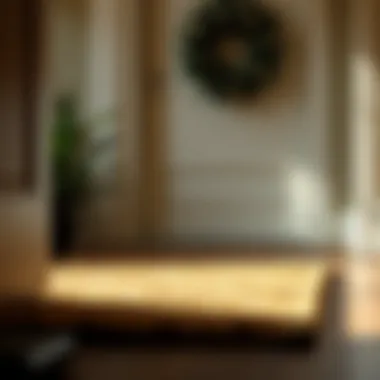
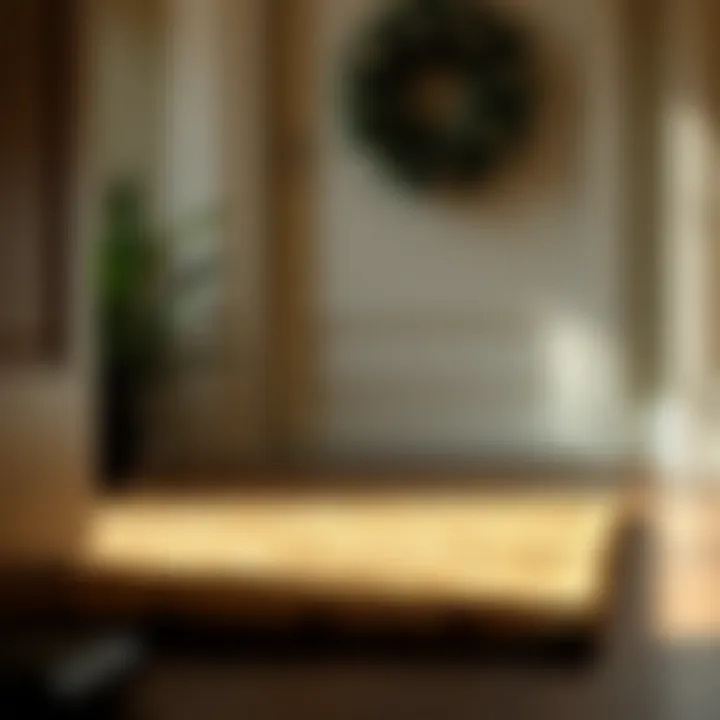
By incorporating these techniques into your regular cleaning schedule, you'll keep your doormats functional and presentable, ensuring they continue to protect your wooden floors effectively.
Deep Cleaning Methods
At times, your doormats may need a thorough cleaning to maintain their appearance and performance. This is especially true for mats that show significant wear or have developed persistent stains. Here are some methods to elevate your cleaning routine:
- Soaking: For natural fiber mats like coir or jute, consider soaking them in a tub with warm water and a bit of detergent. Let them sit for about 10-15 minutes before rinsing thoroughly and allowing them to air dry. Caution: Ensure they are completely dry before use to prevent mold growth.
- Machine Wash: Many synthetic mats, like nylon or polypropylene, are machine washable. Always check the care label provided. Use cold water and a gentle cycle to avoid damage.
- Professional Cleaning: If your doormat seems particularly stubborn, professional cleaning may be worth considering. They have specialized equipment and products that can restore your mat to its former glory without damage.
Remember, diligence in cleaning can significantly prolong the life of your indoor doormats, ensuring they remain an effective barrier against dirt and moisture, protecting your wood floors for years to come.
"A clean doormat is not just a matter of aesthetics, it's a crucial element for protecting the beauty of wood floors."
As you maintain your doormats, consider the best practices to keep them looking their best— it’s the little things that make a big difference in home upkeep!
Environmental Impact of Doormats
Understanding the environmental impact of doormats is crucial for homeowners and designers alike. Doormats, while often overlooked, play a significant role in maintaining not just our interiors but also our planet. As we become more conscious of sustainability, it is pertinent to consider the materials and practices involved in the production of these everyday items. By selecting environmentally friendly doormats, we can make a tangible difference in our carbon footprint and support sustainable manufacturing practices.
The right doormat can act as the first line of defense against dirt and moisture, which in turn protects your wood floors. However, in doing so, it is essential to ensure that the materials used are not harmful to the environment. Poorly produced doormats can contribute to landfill waste and pollution. Therefore, shedding light on the sustainable practices in production and understanding biodegradability and recycling is vital for making informed choices that benefit both our homes and the earth.
"Every small choice can ripple into a larger impact. Choosing wisely can help us tread lightly on the planet."
Sustainable Practices in Production
Sustainable practices in production of doormats encompass how the materials are sourced, the manufacturing conditions, and the overall life cycle of the product. When shopping for doormats, it’s wise to look for products that prioritize sustainable materials. Natural fibers like jute and coir hold an edge here, as they come from renewable resources. These materials not only provide durability but are also biodegradable, which is a significant consideration in avoiding long-lasting waste.
Designers should consider doormats that are produced with minimal environmental impact. Many manufacturers are adopting sustainable methods that include:
- Eco-friendly material sourcing: Opting for fibers that require less water and pesticides during growth.
- Energy-efficient production: Utilizing renewable energy sources in factories can minimize the carbon output during manufacturing.
- Fair labor practices: Supporting companies that treat their workers ethically contributes to a more sustainable production environment.
These elements create a comprehensive approach to responsible manufacturing, where each step is considered for its effect on the planet.
Biodegradability and Recycling
The questions of biodegradability and recycling are paramount when discussing doormats. Biodegradable materials breakdown naturally and return to the earth without leaving harmful residues. This is essential for those looking to maintain an eco-friendly home. Products made from organic substances such as cotton, jute, or coir are fantastic choices, as they can decompose within a reasonable time frame, avoiding lingering waste issues.
In contrast, synthetic doormats may contain plastics that can take hundreds of years to decompose. As homeowners make purchasing decisions, it is beneficial to look into:
- Biodegradable options: Selecting doormats that clearly state they are landfill-friendly can ensure that waste does not linger.
- Recycling programs: Some manufacturers offer take-back programs allowing you to send back old doormats for repurposing.
By opting for biodegradable doormats and engaging in recycling, you contribute to sustainable practices that can mitigate the negative impacts on our environment. Choosing wisely here is not merely about aesthetic or durability; it’s about aligning our choices with a vision for a healthier planet.
The End: Making an Informed Choice
Choosing the right doormat for wood floors is more than just about aesthetics; it’s a pivotal decision that intertwines functionality with style. A doormat serves as the first line of defense against dirt and moisture, safeguarding the integrity of wood flooring. Thus, making an informed choice can preserve the visual appeal and longevity of your investment.
When selecting a doormat, several critical elements come into play. The material is often the most significant factor; options may vary widely from natural fibers to synthetic choices. Each material has its own set of advantages and drawbacks that homeowners must consider. Durability is key as well, especially in high-traffic areas where signs of wear and tear can develop quickly. The doormat also needs to be absorbent enough to handle moisture but not overly wet, which could lead to a slippery surface on wood floors.
Furthermore, the design and shape of the doormat can either enhance or clash with your home’s interior decor. Ensuring that your selection is not only effective but also complements the aesthetic of your space is crucial for a cohesive look.
"A well-chosen doormat not only welcomes guests but also speaks volumes about your home’s style and care."
As you weigh your options, keep in mind both practical aspects and personal preferences. By understanding the multifaceted nature of doormat selection, you position yourself to make a sound investment that will benefit your home in both the short and long term.
Recap of Key Considerations
When wrapping up the discussion on doormats, it’s beneficial to revisit the essential factors that guide the selection process. The following points stand out:
- Material Matters: Choose between natural or synthetic fibers based on the traffic level and the specific needs of your household.
- Design Cohesion: Select colors and patterns that integrate well with your existing interior design, ensuring a harmonious transition between spaces.
- Functional Features: Look for absorbency and durability, focusing on doormats that will stand the test of time while protecting your wood floors.
- Environmental Impact: Consider eco-friendly options that offer sustainability without compromising on quality or appearance.
These elements not only influence the effectiveness of the doormat but also reflect your values as a homeowner.
Final Thoughts on Doormat Selection
To summarize, selecting the optimal doormat for wood floors demands a balanced approach that melds practicality with aesthetic sensibility. Homeowners, designers, and DIY enthusiasts alike should assess their unique circumstances when making this choice. It’s not just about buying a mat; it’s about making an investment that safeguards your wood floors and enhances your home environment.
With the wealth of options available today, achieving the right balance between functionality and style is more attainable than ever. Take your time to evaluate what works best for you, and don’t shy away from seeking out products that align with both your practical needs and design preferences. A thoughtful selection now will ensure that you enjoy your wood floors for many years to come.















